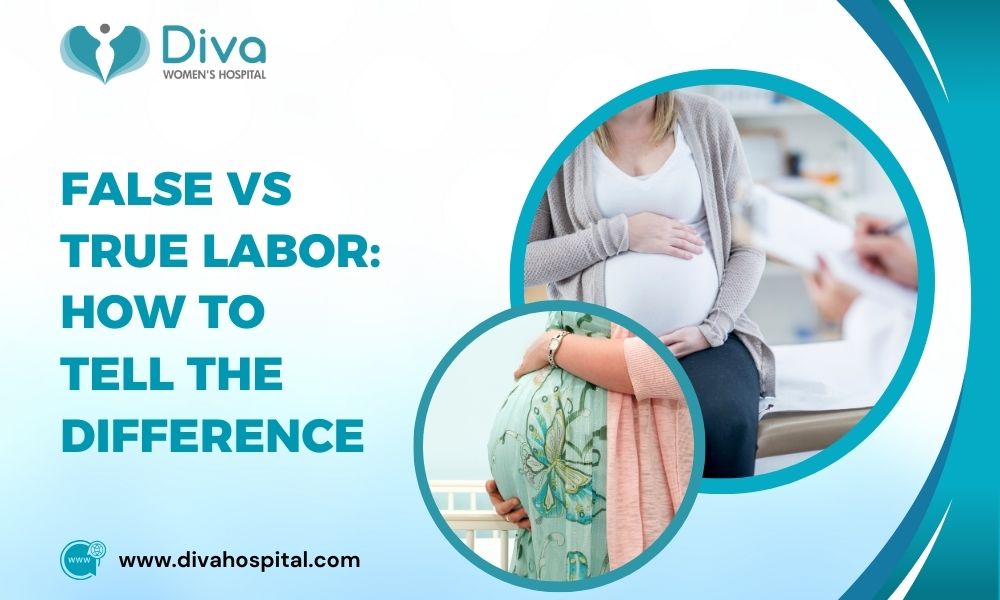Pregnancy is an exciting journey filled with many different surprises, and as the date of delivery approaches, many women have experiences that may seem like labour but may not be. These are called “false labour pains” and can lead to confusion, especially among first-time mothers. One of the most frequently asked questions at Diva Women’s Hospital is: “How can I distinguish true labour from false pain?” This blog post will assist you in recognising the fundamental differentiation between false memories and pregnancy signs compared to genuine labour so that you will be more confident and equipped.
What is False Labor Pain?
False labour pain, the so-called Braxton-Hicks contractions, is the body’s method of getting ready for the baby to be delivered. These are simply practice contractions similar to those you experience when in labour, but they go away right after. These contractions may start anytime between the second and third trimesters, but they are more often seen in the third trimester.
Key Signs of False Pain and Pregnancy
These symptoms can be confusing, but they are completely normal and not a cause for concern.
Here’s how to identify False pain in pregnancy:
- Irregular contractions: They don’t come in a particular order, and they may not start when you move or rest.
- Mild discomfort: The pain is generally not as strong as pain during childbirth due to the birth of a child.
- No cervical changes: False labor is the cause of the cervix’s dilation.
- Felts in front only: Fake contractions are mostly experienced in the anterior part of the abdomen or the pelvis.
These symptoms aren’t easy to evaluate, but they are common and unnecessary to be concerned about.
What is True Labour?
Real labour preparation is a sign that your body is on the way to delivering a baby. The contractions dilate your cervix and facilitate the baby to move down the birth canal.
Signs of True Labour:
- Sustained contractions: They are recurrent, regular, and intensify throughout time.
- Rising pain: The pain increases and continues to be there even if you rest.
- Back and abdominal pain: You can feel a strong pain in your lower back, the area from the thoracic to the lumbar spine, and pelvis.
- Cervical dilation: A visible sign of true labour is the opening of the cervix.
- Water breaking or bloody show: These are additional signs that labour has already begun.
False vs True Labor: Key Differences
| Feature | False Labor Pain | True Labor Pain |
| Contraction Pattern | Irregular, unpredictable | Regular and increasing in strength |
| Pain Location | Front of abdomen | Back and abdomen |
| Change with Movement | Stops with rest or movement | Continues regardless of movement |
| Cervical Change | No dilation | Cervix begins to open |
| Intensity | Mild to moderate | Strong and increasing |
When to Call the Doctor?
Whether you are sure that it is an artificial pain or a real labour, it is always better to consult your physician—more so if:
- You feel severe or constant pain.
- Your water breaks.
- You notice decreased baby movements.
- You have bleeding or unusual discharge.
At Diva Women’s Hospital, our team is available 24/7 to assist you at each phase of pregnancy and labour. Either it is false labour or true labour; here you are fully supported.

